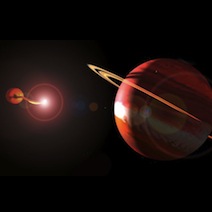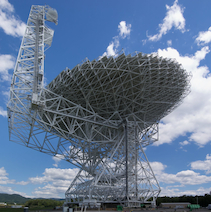There’s been some great news for amateur astronomers recently (and not only for them)! A bit more than a week ago, a new type IA supernova appeared in the Pinwheel galaxy (M101), ans that’s very important news.
Of course, astronomers are carefully observing the event, gathering as much data as they can, but this is also an excellent occasion for amateurs to observe M101.
Supernovae are stellar explosions, and they are among the most violent events in the Universe. They come in various types, and the one we’re interested in is probably due to a white dwarf (the core of a dead star) which is literally sucking matter from a companion star. If the white dwarf accumulates enough matter, it starts to fuse hydrogen atoms into helium, causing the whole star to explode. Such an explosion releases so much energy that it can outshine its parent galaxy!
As you can imagine, these supernovae are so bright that are relatively easy to observe, even over very long distances (this one won’t be visible to the naked eye, but a backyard telescope or good binoculars should be enough to see it). Here is a picture taken by the Faulkes North telescope in Hawaii:

Why is this event so important? Type IA supernovae are a bit special, as we think they all explode in a similar way, which allows to use them to determine distances of far away galaxies. It is actually thanks to these stars that scientists discovered the expansion of the Universe was accelerating.
M101 is a spiral galaxy, located about 25 million light-years away. It is also huge, as it contains about a trillion stars, 10 times more than our Milky Way Galaxy!
Because it’s very close, the study of this supernova should be rather easy, and it was spotted pretty early. Most supernovae occur very far away, and they are detected only after a few days, when they reach their maximum brightness. The earlier they are observed, the better: scientists gather more data, and it is essential to better understand these phenomena.

M101 was already photographed 9 years ago by Hubble, so astronomers were able to check that nothing was visible then. They observed that two stars were very close to the location of the supernova we observe today. According to their size and color, these stars are red giants, stars pretty much like our Sun, but at the end of their lives. They are so big that if a white dwarf was close, it could have sucked enough of their matter to trigger the supernova. Further observations will tell if it is the case. If so, that would be really great news, as very few supernovae progenitors have been observed so far.
Finally, the supernova should reach its maximum brightness very soon (probably in the next few days), so if the conditions are good, that’s a unique occasion to go out with your telescope or binoculars! Don’t miss it!



